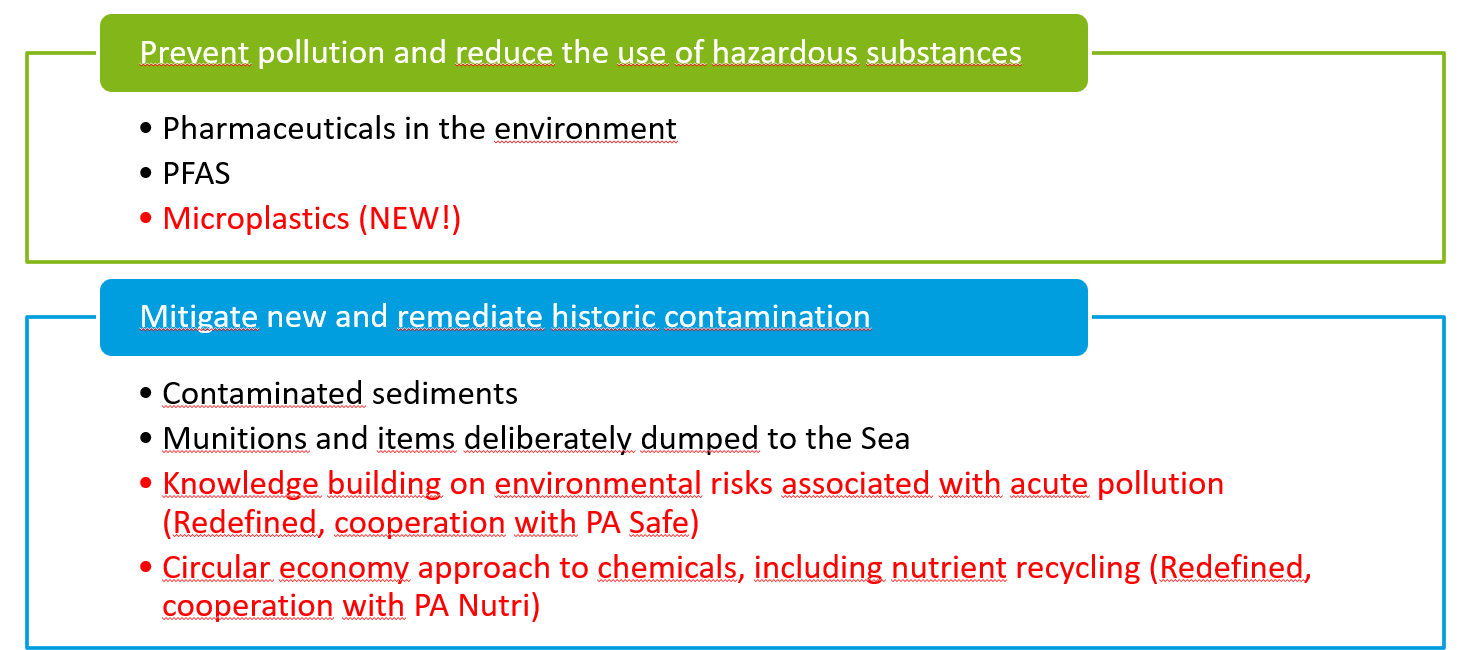Questionnaire for stakeholders
Questions about Policy Area Hazards.
Background
The EU Strategy for the Baltic Sea Region was first approved in 2009 and is an agreement between the European Commission and the EU member states bordering the Baltic Sea: Denmark, Estonia, Finland, Germany, Latvia, Lithuania, Poland and Sweden. It fosters cooperation and finds common solutions to joint challenges on a macro-regional level.
Policy Area Hazards is part of the strategy under the “Save the Sea” objective. The Action plan in place dates from 2021. An update of the actions is currently under-way, to make the strategy more coherent and stringent, and actions up to date with today’s challenges.
PA Hazards has worked on updating its actions together with its Steering Group and other stakeholders through workshops. A first draft was adopted by the PA Hazards Steering Group on 18 December 2024. The National Coordinators Group approved the draft actions on 18 May 2025. Now, we move into the last phase of the update, and we would like to hear your opinions!
PA Hazards has kept the current structure of two actions, however, focus areas have been added and indicators are changing significantly to streamline with other Policy Areas.
Overview of PA Hazards actions
Microplastics
Microplastics was added as an important focus area under Action 1. Microplastics is not present as a topic otherwise in the EUSBSR strategy, and meanwhile, new monitoring requirements are introduced through the revised urban wastewater treatment directive and the REACH regulation. The HELCOM regional action plan for marine litter underlines the need for work on this topic further.
Circular economy approach to chemicals, including nutrients
Mentioned in the 2021 Action plan as well, however, the revision aims to clarify what aspects of the work is important to be addressed by PA Hazards, to work complementary with PA Nutri, which is working on nutrient recycling.
Risk of acute pollution by oil and other substances
Risk of acute pollution by oil and other substances was included in the previous version. PA Maritime Safety supports cross-border collaboration in case of accidents, including oil spills or other fuels under their Action 4. PA Hazards aim to complement these efforts by supporting knowledge building activities on the effect on the marine environment.

.jpg)



